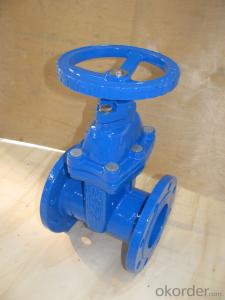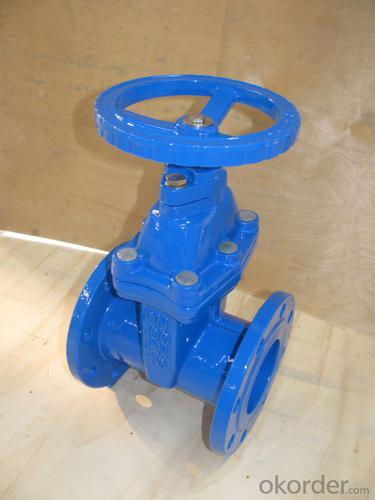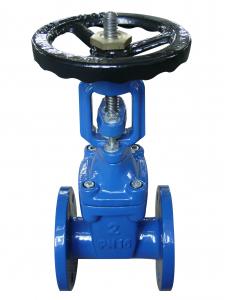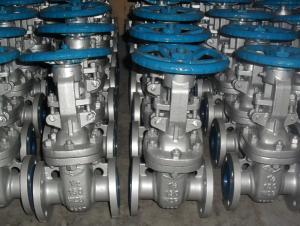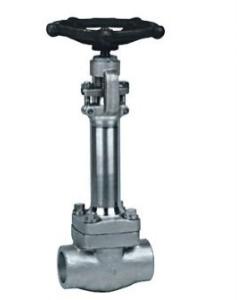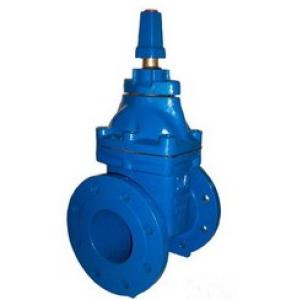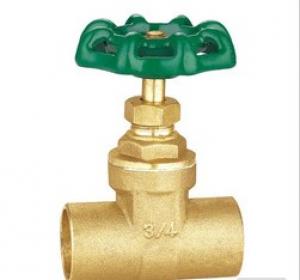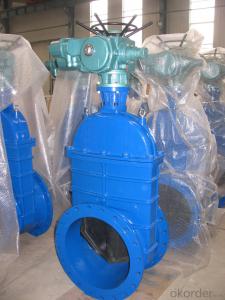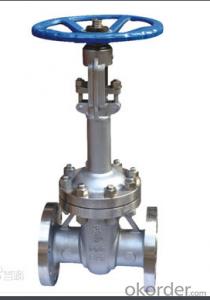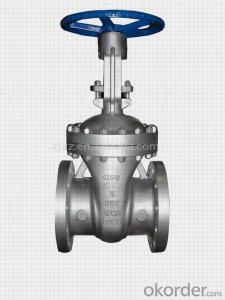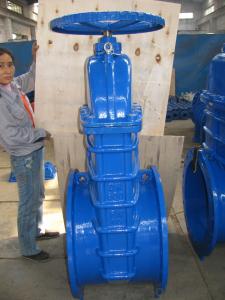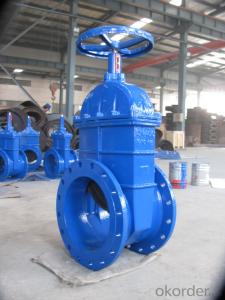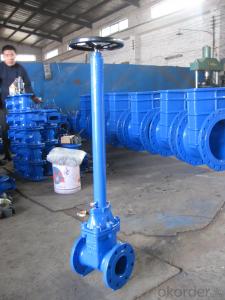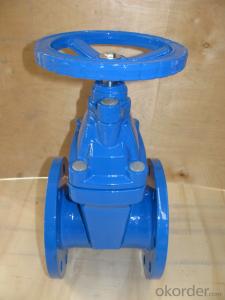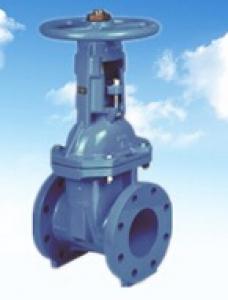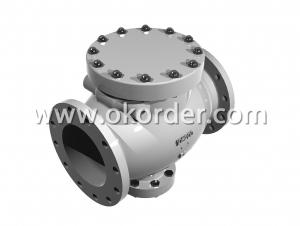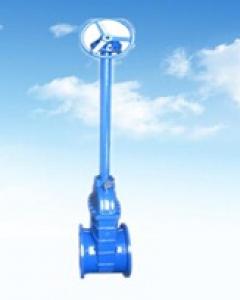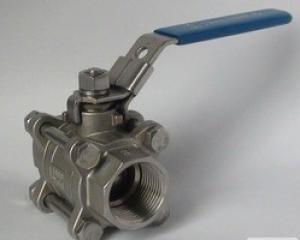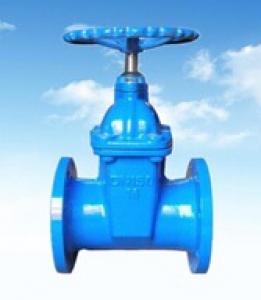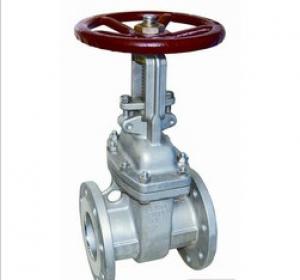DUCTILE IRON VALVE from 30year Old Valve Manufacturer
- Loading Port:
- China main port
- Payment Terms:
- TT OR LC
- Min Order Qty:
- 100 PCS
- Supply Capability:
- 1000 PCS/month
OKorder Service Pledge
OKorder Financial Service
You Might Also Like
1.Structure of Gate Valve Description:
A gate valve, also known as a sluice valve, is a valve that opens by lifting a round or rectangular gate/wedge out of the path of the fluid. The distinct feature of a gate valve is the sealing surfaces between the gate and seats are planar, so gate valves are often used when a straight-line flow of fluid and minimum restriction is desired. The gate faces can form a wedge shape or they can be parallel. Gate valves are primarily used to permit or prevent the flow of liquids, but typical gate valves shouldn't be used for regulating flow, unless they are specifically designed for that purpose. Because of their ability to cut through liquids, gate valves are often used in the petroleum industry. For extremely thick fluids, a specialty valve often known as a knife valve is used to cut through the liquid. On opening the gate valve, the flow path is enlarged in a highly nonlinear manner with respect to percent of opening. This means that flow rate does not change evenly with stem travel. Also, a partially open gate disk tends to vibrate from the fluid flow. Most of the flow change occurs near shutoff with a relatively high fluid velocity causing disk and seat wear and eventual leakage if used to regulate flow. Typical gate valves are designed to be fully opened or closed.When fully open, the typical gate valve has no obstruction in the flow path, resulting in very low friction loss.
2. Main Features of the Gate Valve:
• Valve body cavity using non-toxic epoxy resin,both inside and outside flashboard completely is coated with rubber
• Free of water pollution
• High manufacturing accuracy
• High strength
• Environmental protection and energy saving
• Good visual effect
3. Images
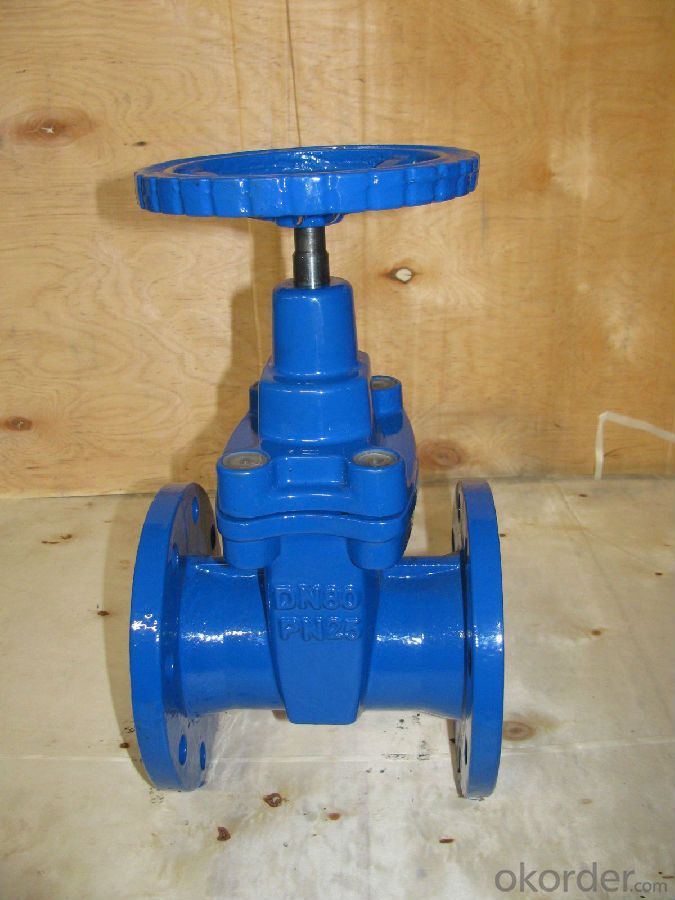
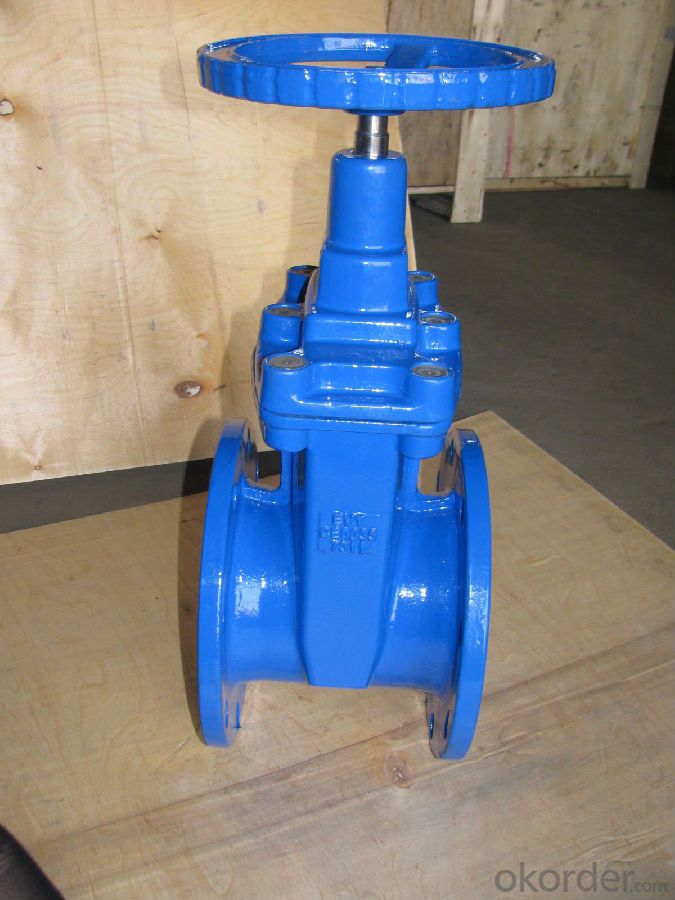

4. Gate valve Specification
Gate valve
Ductile iron gate valve
Flange Gate valve
Our company can produce all kinds of valves, If you have any inquiry, please contact us, we will offer you our best price.
1,good quality and competitive prices |
2,WRAS,CE,ISO 9001 approved. |
3,AKZO epoxy coating available |
Flanged ends according to BS,DIN,MSS,ANSI JIS |
Designed according BS,DIN,MSS,ANSI JIS |
Ductile Iron or Cast Iron body, bonnet and handwheel |
Cast iron wedge, NBR/EPDM coated |
Stainless steel stem, epoxy coating |
Test: BS,DIN,MSS,ANSI JIS |
5.FAQ
1. What's are the characteristics of gate valve?
The distinct feature of a gate valve is the sealing surfaces between the gate and seats are planar, so gate valves are often used when a straight-line flow of fluid and minimum restriction is desired. The gate faces can form a wedge shape or they can be parallel.
2. What is the work principle of gate valve ?
The gate faces can form a wedge shape or they can be parallel. Gate valves are primarily used to permit or prevent the flow of liquids, but typical gate valves shouldn't be used for regulating flow, unless they are specifically designed for that purpose. Because of their ability to cut through liquids, gate valves are often used in the petroleum industry.
3. What is the structure?
Bonnets provide leakproof closure for the valve body. Gate valves may have a screw-in, union, or bolted bonnet. Screw-in bonnet is the simplest, offering a durable, pressure-tight seal. Union bonnet is suitable for applications requiring frequent inspection and cleaning. It also gives the body added strength. Bolted bonnet is used for larger valves and higher pressure applications.
- Q: What type of flange does it fit with the gate valve?
- According to the welding plate flange, flange material selection of piping material.
- Q: Why can't the pressure measuring point be set at the two ends of the gate valve when measuring the resistance loss of the gate valve?
- the valve before the pressure measuring point, distance of valve straight pipe length is 5 times the diameter of the valve after the pressure valve, the distance is 10 times the diameter of straight pipe length.
- Q: Does the relief valve have a gate valve?
- No The front end must be in control.
- Q: Why does the fire hydrant box in the air defense area need to be added with gate valves?
- 3, protective valve should be used for stainless steel or copper gate valve or cut-off valve;4, air defense enclosure structure, the distance from the proximal end of the valve should not be greater than 200mm. Valve should have obvious signs of opening and closing.
- Q: The valve safety valve check valve + + + = exposed part of a water pump adapter? Five
- Generally do not require safety valve, just install exhaust valve in individual places.
- Q: What do gates, Z15T-10, Z15W-16T, Z45T/W-10, Z41T-10 mean?
- Z15T stands for manual, internal thread connection, dark wedge single gate. The sealing surface is made of copper alloy. The nominal pressure is PN1MPa;Z15W-16T for manual, internal thread connection, dark wedge type single gate, the valve body material is copper alloy, the valve seat sealing surface material directly processed by the valve body, nominal pressure is PN1.6MPa;Z45T/W-10 stands for manual, flange connection, dark wedge single gate. The valve body is made of copper alloy, and the valve seat face material is directly machined by the valve body. The nominal pressure is PN1MPa;Z41T-10 stands for manual, flange connections, plain wedge single gate, sealing surface material is copper alloy, nominal pressure is PN1MPa.According to domestic valve model standards, the valve model is by the valve type, gate valve drive mode, gate valve connection, gate valve structure, sealing material, valve body material code to indicate
- Q: Gate valve is gate valve, gate valve specifications, model code is generally what?
- Valve lock valve and gate valve. According to the code, the domestic valve type standard, valve type valve is composed of valve type, drive mode, valve connection, valve structure, sealing material, body material code to said gate type code Z.Gate valve: gate valve is one of the most commonly used shut-off valve, mainly used to connect or cut off the pipeline medium, not used to regulate the flow of media. A wide range of pressure, temperature and diameter is used, especially for medium and large diameter pipes.1, the main characteristics of gate valve(1) fluid resistance is small. The through hole of the gate body is straight through, and the flow direction of the medium does not change when flowing through the medium, so the flow resistance is smaller.(2) opening and closing is more labor-saving. When opening and closing, the direction of valve plate movement is perpendicular to the direction of flow of medium. Compared with the opening and closing more effort.(3) medium flow direction is generally unrestricted. The medium can flow in any direction from both sides and can achieve the purpose of switching on or cutting off. Easy to install, used in the flow direction of the medium may change in the pipeline.
- Q: Fire protection gate valve from the wall how many distance there is no regulation?
- 1 meters away from the wall, leaving the maintenance and replacement distance
- Q: What is the difference between a flanged gate valve and a wire gate valve?
- This is very simple, flanged gate valve is the valve with both ends of the flange, the installation of the pipe to weld the reverse flange, bolt with the pipe flange and valve flange connection. Valve is the valve ends with wire wire, a wire and wire points, and pipeline installation, connecting part with joint or head of the screw and the valve directly on the pipe screw connection.
- Q: Why does the centrifugal pump start and stop in the case of closing the gate valve?
- The centrifugal pump starts and stops in the case of closing the pump outlet valve. Start off the pump outlet valve is to reduce the starting current, stop when the pump is closed, the outlet valve is to reduce water hammer, prevent blade from bad.
Send your message to us
DUCTILE IRON VALVE from 30year Old Valve Manufacturer
- Loading Port:
- China main port
- Payment Terms:
- TT OR LC
- Min Order Qty:
- 100 PCS
- Supply Capability:
- 1000 PCS/month
OKorder Service Pledge
OKorder Financial Service
Similar products
Hot products
Hot Searches
Related keywords
